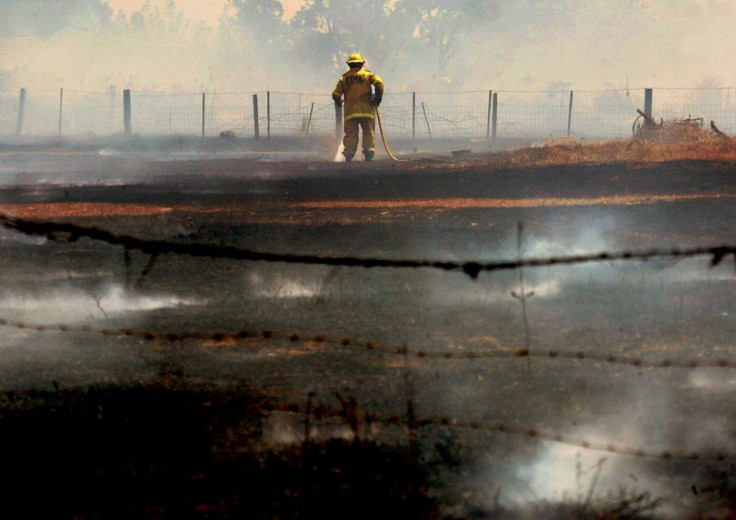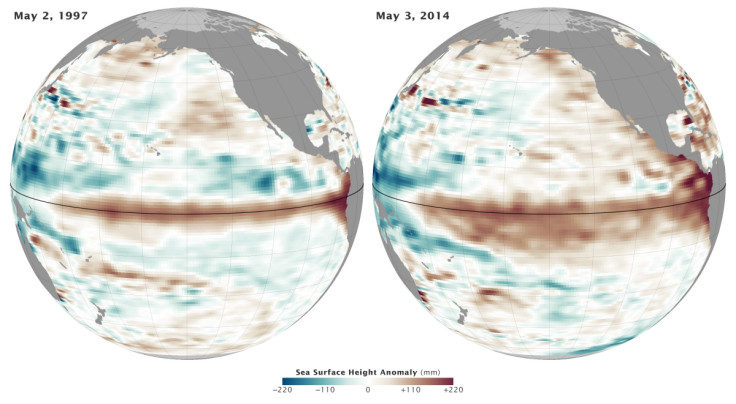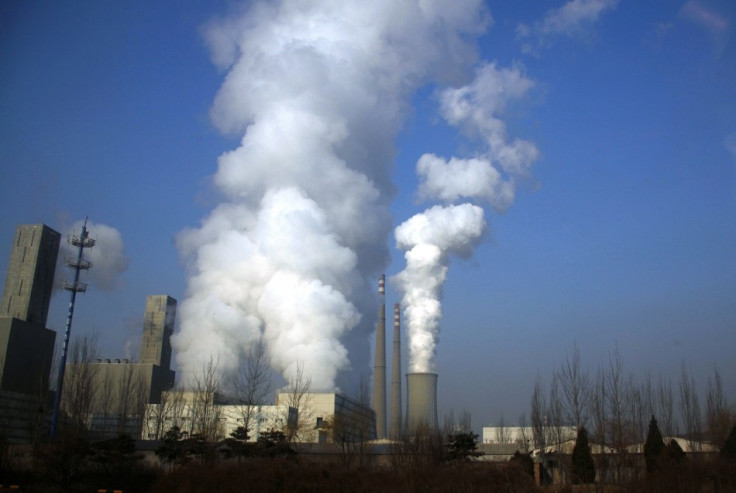El Nino 2014: Everything You Need to Know About the Weather Event Set to Hit in August

The chance of an El Nino year is now at least 70%, Australia's Bureau of Meteorology has warned.
The BoM said the tropical Pacific Ocean has continued a general trend towards El Nino, with models suggesting it will take place in August.
"Just over half of the climate models surveyed by the Bureau suggesting El Nino thresholds will be exceeded by August. An El Nino alert remains in place, indicating at least a 70% chance of an El Niño developing in 2014."
Nasa satellite data also recently showed El Nino conditions appearing to develop in the Pacific Ocean
What is El Nino?

At its most basic, during El Nino, easterly winds in the Pacific allow waves of warm water to drift towards South America, causing surface waters to become much warmer. This results in altered weather patterns that affects fisheries and can lead to flooding and droughts.
The US National Oceanic and Atmospheric Association noted that the physical processes behind El Nino are very complicated, but involve unstable air-sea interactions and planetary-scale oceanic waves.
Who will it affect?
The BoM says El Nino will impact many parts of the world. There will be below-average rainfall in the western Pacific and Indonesian regions and increased rainfall in central and eastern Pacific. In Australia, areas in the southern and eastern inland often experience less rainfall, with major droughts normally taking place over large parts of the country.
In the US and Peru, El Nino brings increased rainfall that can cause destructive flooding. Snowfall is also more likely across the southern Rockies and Sierra Nevada mountain range. It can lead to warmer temperatures during fall and winter – a stark contrast the polar vortex that hit parts of the US last winter.
What about food?

Earlier this year, experts warned that the floods and droughts that result from El Nino could lead to food shortages and hiked prices as a result. Soft commodity investors said they would likely have to raise the prices to offset their potential losses.
In a note to investors, Capital Economics said: "El Nino is a transient event. We expect prices to resume their downward trajectory when weather conditions normalise. Thus any impact on inflation should be temporary." It is thought the price of sugar, coffee and wheat will be particularly affected.
A recent report in Nature Communications also warned maize yields could be reduced by as much as 4%, with soybean, rice and wheat also affected.
What was the worst El Nino in recent history?
The worst El Nino in recent decades took place between 1997/98. The winter was the second warmest and seventh wettest in over 100 years and severe weather events resulting from El Nino included flooding in the southeast, an ice storm in the northeast, flooding in California and tornadoes in Florida. On the other side of the globe, there were huge floods along China's Yangtze river and Australia experienced below-average rainfall that led to localised droughts. In total, around 2,000 people are thought to have died as a result of El Nino.
Is it to do with climate change?

The connection between climate change and El Nino is a confused one that the NOAA has few answers to. While it says it is possible global warming affects El Nino, computer climate models are hampered by poor representation of many of the key processes involved in El Nino.
"Also, no computer model yet can reliably simulate BOTH El Nino AND greenhouse gas warming together. So, depending on which model you choose to believe, you can get different answers. For example, some scientists have speculated that a warmer atmosphere is likely to produce stronger or more frequent El Niños, based on trends observed over the past 25 years.
"However, some computer models indicate El Niños may actually be weaker in a warmer climate. This is a very complicated (but very important!) issue that will require further research to arrive at a convincing answer."
Is there a plus side?
While El Nino generally spells bad news for the areas affected, Andrew Watkins, head of the Bureau of Meteorology's Climate Prediction Services told AAP it may have a positive effect next year. He explained the phenomenon may lead to a reduction of the number of tropical cyclones and boost crop growth including sugar cane and mangoes.
© Copyright IBTimes 2024. All rights reserved.







